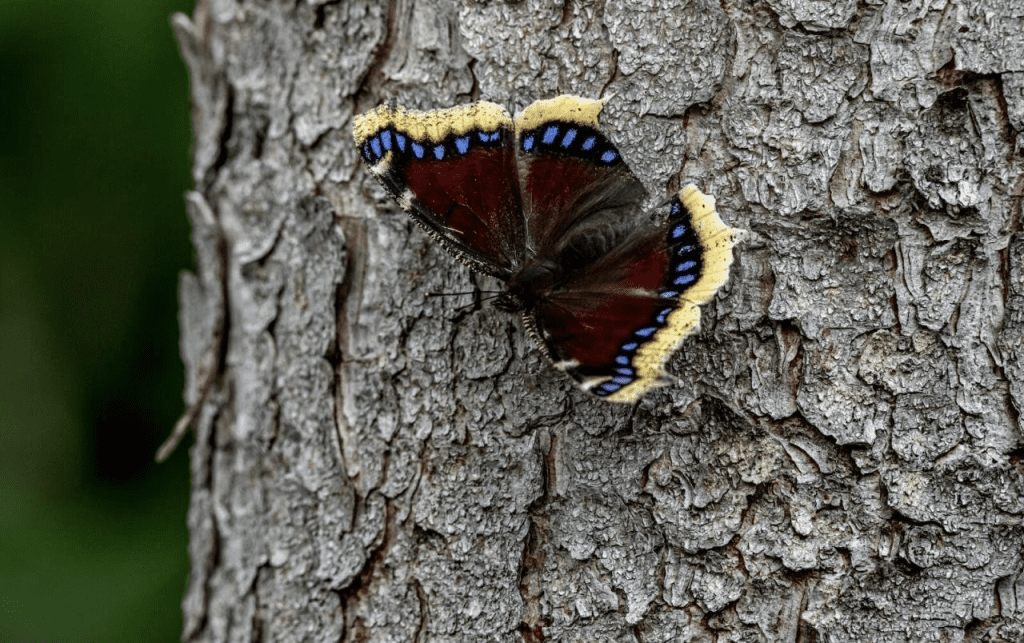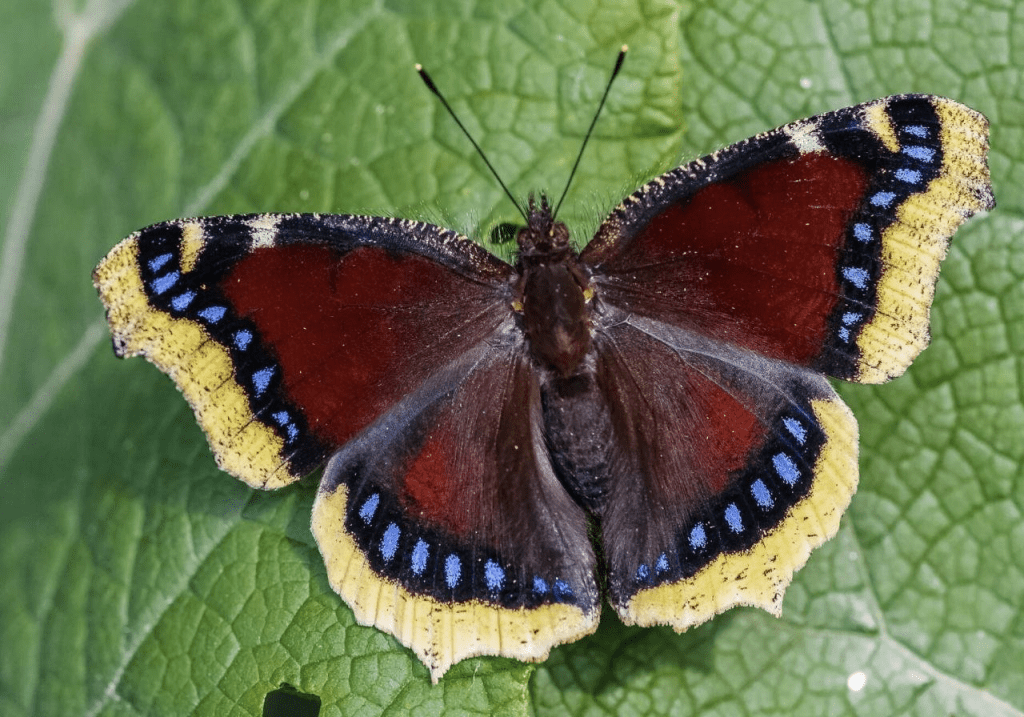You know where to find me most days? In my garden. There’s something deeply satisfying about digging into the soil, nurturing plants, and watching them thrive. But let’s be real—gardening can be tough. One of the biggest challenges is dealing with pests. Some critters are helpful, while others can destroy everything you’ve worked so hard to grow.

Recently, I stumbled across a photo circulating on social media that left me confused and a little freaked out. The image showed a leaf covered in tiny, intricate black geometric shapes. At first glance, it looked like the leaf had been taken over by some kind of alien lattice or bizarre disease. Like many others, I wondered what on earth it could be.
The Mysterious Black Patterns on the Leaf
After a bit of research, I discovered that these strange shapes weren’t a threat at all. They were actually Nymphalis Antiopa butterfly eggs. This species, also known as the Mourning Cloak butterfly, has an incredibly unique life cycle and some pretty fascinating habits. Once I understood what I was looking at, my initial shock turned into admiration for the beauty of nature.
The close-up photo of the eggs revealed a delicate black lace, almost like artwork spread across the leaf. These eggs are laid in clusters, each one a perfectly geometric wonder. When I first saw them, my immediate thought was, “This is either going to be really good for my garden, or a complete disaster.” Luckily, the reality was much better than I anticipated.
What Are Nymphalis Antiopa Butterflies?
So, what exactly are Nymphalis Antiopa butterflies? They are a species of butterfly known for their dark, velvety wings bordered in bright yellow, with blue spots lining the edge. These butterflies might not be as commonly recognized as monarchs or swallowtails, but they play an essential role in our ecosystem.
The Mourning Cloak butterfly, like many other species, has a lifecycle that begins with these small, intricate eggs. The eggs hatch into caterpillars, which feed on the leaves where they were laid. However, unlike some caterpillars that devour entire plants, Mourning Cloak caterpillars typically prefer trees like willows, elms, and poplars. This means if your garden is full of flowers and vegetables, you likely won’t have to worry about these caterpillars munching away at your plants.
The Fascinating Lifecycle of the Nymphalis Antiopa
Once the eggs hatch, the Mourning Cloak caterpillars emerge. They’re small, spiny creatures, black with tiny white spots covering their bodies. As they grow, they go through several stages, called instars, shedding their skin each time and increasing in size.
The next phase of their lifecycle is the most exciting—pupation. The caterpillars find a safe, sheltered spot to spin a chrysalis, their temporary home as they undergo their miraculous transformation. This process can last anywhere from a couple of weeks to several months, depending on the weather and the time of year. Eventually, the beautiful Mourning Cloak butterflies emerge, ready to grace your garden with their presence.
Beneficial Butterflies: Why You Want Them in Your Garden

One of the most remarkable aspects of the Nymphalis Antiopa butterfly is their beneficial role in your garden. While their caterpillars might nibble on a few leaves, they don’t pose a serious threat to your plants. Instead, these butterflies contribute to the ecosystem in several positive ways.
For instance, Mourning Cloaks feed on rotting fruit and help break it down, assisting in the natural process of decomposition. In this way, they act as little cleanup crew members for your garden. Additionally, by providing a habitat for these butterflies, you’re encouraging biodiversity, which in turn helps create a more balanced and resilient garden ecosystem.
The Unique Winter Behavior of Mourning Cloak Butterflies
Another fascinating trait of the Mourning Cloak butterfly is their behavior during the colder months. Unlike most butterflies, which migrate or die off during winter, Mourning Cloaks hibernate. They seek out a cozy spot under loose bark, in piles of wood, or even in your garden shed to weather the cold months. When spring arrives, these hardy butterflies are often the first to emerge, even before most flowers have bloomed. The sight of their dark, velvety wings fluttering against the stark landscape is why they’re often called “Mourning Cloaks,” reminiscent of somber attire.

Should You Be Worried About These Caterpillars in Your Garden?
Many gardeners’ first instinct when they spot caterpillars is to panic, assuming they’ll decimate their plants. However, before you reach for the insecticide, it’s important to recognize the difference between harmful pests and beneficial insects like the Mourning Cloak. These butterflies won’t destroy your garden—instead, they’re part of the delicate balance of nature.
So, what should you do if you spot Mourning Cloak eggs or caterpillars on your plants? My advice: leave them be. Observe the fascinating process of their lifecycle, and enjoy watching nature in action. If you’re worried about the caterpillars feasting on your prized flowers, you can gently relocate them to a nearby tree or shrub where they’ll be happier—and where they’ll do less damage.
Gardening Is All About Balance

One of the most valuable lessons I’ve learned from gardening is that it’s all about balance. Every creature in the garden has a role to play, and it’s essential to find harmony between the plants you love and the insects that share your space. Some insects may seem like pests at first glance, but upon closer inspection, they contribute to the health and vibrancy of your garden.
Next time you spot something unfamiliar in your garden, take a moment to investigate before assuming the worst. You might just discover something amazing—like I did with the Nymphalis Antiopa butterfly eggs. This surprise not only taught me more about nature but also reminded me of the beauty and complexity of the natural world.
Conclusion: The Joy of Discovery in the Garden
In the end, gardening is a journey of surprises, lessons, and growth. Every season brings new challenges, and every challenge offers a chance to learn something new. The next time you’re in your garden and notice something unusual—whether it’s strange black shapes on a leaf or an unfamiliar insect—take a moment to observe, research, and appreciate the intricacy of nature. After all, gardening isn’t just about nurturing plants; it’s about fostering a deeper connection with the world around us.